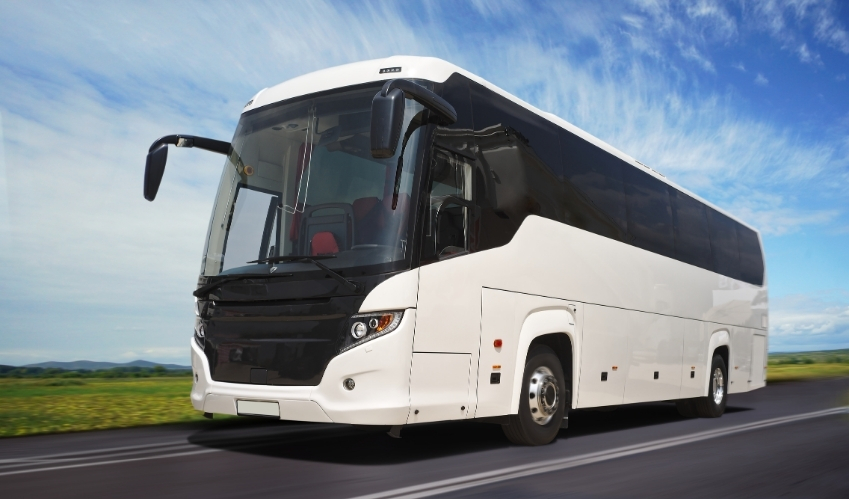North America Bus Market Size, Share and Report – 2034

North America Bus Market Outlook
The North America bus market reached a volume of 59.48 thousand units in 2024. Aided by increasing investments in public transit infrastructure, the rising demand for clean and electric mobility, and evolving transportation policies, the market is projected to grow at a CAGR of 2.60% during the forecast period of 2025 to 2034, reaching approximately 76.89 thousand units by 2034.
The growing emphasis on sustainable urban transportation across the United States and Canada is driving the market forward. Public and private transport operators are increasingly adopting low-emission and zero-emission buses to meet climate goals and regulatory requirements. With urbanisation expanding and cities under pressure to reduce traffic congestion and air pollution, there is an accelerating shift towards modernising existing fleets. These changes are being complemented by government grants and funding programs that support the deployment of electric buses, making North America a key market for clean bus technologies. The region’s strong school transport network, expanding metropolitan transit systems, and intercity travel services are collectively reinforcing the market’s steady trajectory.
North America Bus Market Size
In 2024, the North America bus market was valued at 59.48 thousand units, reflecting a relatively stable but progressively expanding industry. The region’s mature yet evolving transport infrastructure continues to provide ample scope for the procurement of new buses. As aging fleets reach the end of their lifecycle, public agencies and private operators are investing in modern replacements with better fuel efficiency and lower emissions. This shift not only contributes to the rise in overall market size but also aligns with broader goals for public safety, accessibility, and environmental compliance. Urban areas in the United States, supported by federal funding initiatives, are increasingly adopting bus rapid transit systems, which is further expected to boost demand for advanced and high-capacity buses.
North America Bus Market Share
The United States accounts for the largest share in the North America bus market, driven by its extensive network of school, public, and private bus services. The country’s school bus segment is particularly dominant, with hundreds of thousands of school buses operating daily, leading to regular replacement cycles and new purchases. In Canada, a smaller but technologically progressive market, the focus is primarily on transitioning transit fleets to electric buses. This transition is backed by both federal and provincial governments, contributing to the country’s growing share in the clean mobility segment. When segmented by type, transit buses lead the commercial bus category due to rising investments in urban transportation networks, while school buses maintain the largest share in terms of units sold annually.
North America Bus Market Trends
One of the key trends in the North America bus market is the rapid electrification of fleets. With increasing pressure to reduce greenhouse gas emissions, both municipal and private fleet operators are replacing diesel buses with battery electric and hybrid models. The United States Environmental Protection Agency (EPA) and the Federal Transit Administration (FTA) are spearheading this trend by offering substantial financial incentives through programs such as the Low or No Emission Vehicle Program and the Clean School Bus Program. These initiatives have significantly increased the adoption of electric buses in both school and urban transit sectors.
Another notable trend is the integration of smart technology in buses. Transit agencies are increasingly deploying buses equipped with telematics, GPS tracking, and real-time passenger information systems. These advancements enhance fleet management capabilities and improve the overall passenger experience. Additionally, manufacturers are designing customized and luxury coaches with modern amenities to cater to the needs of the tourism, charter, and corporate transportation segments. The rising preference for sustainable and tech-enabled transport options is expected to further accelerate innovation in the market.
Drivers of Growth
The growth of the North America bus market is primarily driven by robust government support and policy initiatives aimed at improving public transportation infrastructure. Substantial funding from federal and state agencies is enabling transit authorities to modernize their fleets and incorporate clean technologies. Urbanisation and increasing population density in metropolitan regions are also pushing local governments to expand and enhance their bus networks as a cost-effective solution for reducing road congestion and emissions.
Environmental regulations targeting carbon neutrality are playing a critical role in shaping procurement strategies for new buses. Fleet operators are increasingly opting for electric buses to meet climate goals and comply with evolving emission standards. Additionally, there is a consistent demand for school buses, particularly in the United States, where school transportation remains an essential service. The growth of rural transit programs and improved accessibility initiatives further contribute to the rising demand for buses in underserved regions.
Request your complimentary sample report today – https://www.expertmarketresearch.com/reports/north-america-bus-market/requestsample
North America Bus Market Segmentation
The market can be divided based on fuel type, bus type, length, body type and regi
Market Breakup by Fuel Type
- Diesel
- Electric / Hybrid
- CNG
- Fuel Cell
- Others
Market Breakup by Bus Type
- Intercity Bus
- Intracity Bus
Market Breakup by Length
- Up to 6 Meter
- 6 -8 Meter
- 8 – 10 Meter
- 12 Meter
- 18 Meter
Market Breakup by Body Type
- Fully Built
- Customisable Body
Market Breakup by Region
- United States
- Canada
Industry Key Players
Some of the major players explored in the report by Expert Market Research are as follows:
- Daimler Truck AG
- AB Volvo
- MAN SE
- Marcopolo S.A.
- Navistar, Inc.
- Proterra
- NFI Group
- Blue Bird Corporation
- Rev Group
- Others
Challenges and Opportunities
The North America bus market, while growing steadily, faces several challenges. The high upfront cost of electric and hybrid buses remains a significant barrier to adoption, especially for smaller municipalities and private operators. Additionally, the limited availability of charging infrastructure in rural and intercity routes hinders the widespread deployment of battery electric buses. Supply chain disruptions, particularly in the procurement of semiconductors and battery components, have also led to production delays and cost increases in recent years.
Another ongoing challenge is the shortage of qualified bus drivers, which affects service availability and fleet utilisation rates. Rising labour costs and regulatory complexities around commercial driving licenses add further strain to transit operations.
On the other hand, the market presents strong opportunities. The continuous push for clean energy adoption and emission reduction creates a favourable environment for electric and fuel cell buses. Technological advancements in autonomous driving and connectivity offer prospects for next-generation transit solutions. Moreover, the expansion of federal programs supporting rural and low-income area mobility is likely to open new markets for bus deployment.
The emergence of innovative financing models, including bus-as-a-service and leasing arrangements, provides fleet operators with flexible options to upgrade their systems without heavy capital investments. Export opportunities may also arise for North American bus manufacturers targeting Latin American and Southeast Asian markets, where demand for durable and efficient public transport vehicles is rising.
North America Bus Market Forecast
The North America bus market is expected to witness steady expansion during the forecast period of 2025 to 2034. With a projected CAGR of 2.60%, the market is anticipated to reach around 76.89 thousand units by 2034. This growth will largely be fuelled by the transition towards low-emission and electric buses, supported by robust funding, technology advancements, and environmental mandates.
The electric bus segment is expected to register the fastest growth, driven by large-scale fleet electrification initiatives across urban and school transport networks. Investment in smart transit systems, enhanced passenger experience, and integrated fleet management solutions will contribute to the increasing appeal of buses as a viable urban mobility solution. Furthermore, the continuing modernisation of public infrastructure and expansion of BRT corridors in major cities are likely to create sustained demand for new bus units.
As governments and transport agencies align their goals with net-zero emission targets, North America’s bus market is poised to play a central role in the future of sustainable public transportation. The ongoing transition is not only expected to benefit the environment but also improve the quality, accessibility, and affordability of mass transit across the region.
Read Our More Trending Reports:
Socks Market: https://www.expertmarketresearch.com/reports/socks-market
High Oleic Oil Market: https://www.expertmarketresearch.com/reports/high-oleic-oil-market
Data Warehousing Market: https://www.expertmarketresearch.com/reports/data-warehousing-market
Media Contact:
Company Name: Claight Corporation
Email: sales@expertmarketresearch.com
Toll Free Number: +1–415–325–5166 | +44–702–402–5790
Address: C-130 Sector 2 Noida, Uttar Pradesh 201301
Website: https://www.expertmarketresearch.com




